3 essential strategies to increase website traffic
Looking to increase website traffic? Leverage the power of these 3 essential strategies:
- Blogging
- Social media
- Influencers
1. How to leverage the power of blogging to generate website traffic
To generate website traffic you need content and blogging is the most effective way to create content.
Is blogging easy?
No, it’s not, but companies with blogs generate on average 67% more leads per month than companies that don’t blog.
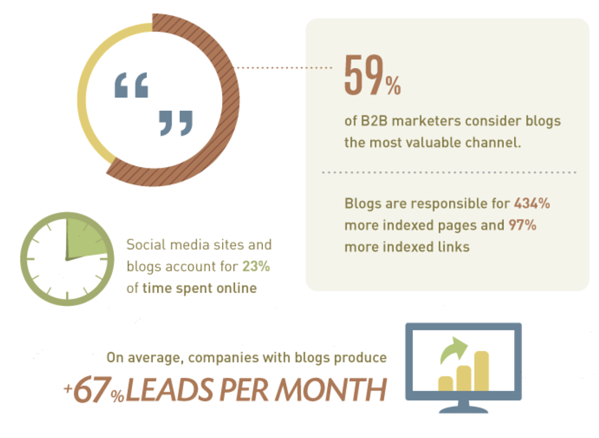
source: hubspot.com
It is a well-known fact that Google loves fresh content so companies that publish new content consistently have a lot to gain and I’m not talking about traffic alone.
Successful companies like HubSpot or Salesforce have grown into content publishing powerhouses. They put out several blog articles a day filled with valuable insights, how-to’s and other recommendations for marketers and sales professionals.
Companies like these two either have a 5-6 writer in-house team or hire freelance writers. Another solution is to welcome guest posts. No matter which option they went with, they have a well-planned editorial calendar for at least 6 months in advance.
It’s totally understandable if your company cannot publish five articles a day, not every company has the human and financial resources of Hubspot and salesforce.
You can start by publishing one article per day. You don’t have a content writer on your team yet? No problem!
Find industry experts or influencers in your niche who are looking to increase their personal brand and invite them to contribute guest blogs.
It’s a win-win situation: contributors boost their visibility and reputation, and your blog benefits from increased traffic from prospects you could turn into leads then customers.
Now that you have writers generating content, it’s time to ensure your published content shows up in Google search results and gets clicked on. In other words: it’s SEO time!
SEO recommendations to get your content to show up in Google search results and get clicked on
1.Keywords with high search volume vs keywords with low search volume
Before jumping into writing content, Nadya Khoja, Chief Growth Officer at Venngage and experienced B2B marketer recommends marketers to determine the search intent of their B2B audience.
Nadya says marketers shouldn’t choose keywords based solely on search volume. When it comes to B2B, marketers should choose keywords and terms that are first and foremost relevant to their audience even if they have a lower search volume.
“Popular searches in your industry will attract more B2C consumers, whereas focused keywords that have a higher value, but a lower search volume, usually fall in the B2B realm.”, says Nadya.
2. Put honey in your titles
The most important element of your blog article is not the contents, but the headline. If the headline is not attractive enough, no one will read the contents.
Think of the headline as honey: it’s sweet and nutritious and bears cannot resist but eat it whenever they find it.
What does a “sweet” headline look like?
A compelling headline:
- offers a solution to the reader’s problem;
- includes an engaging qualifier (i.e.: smart, amazing, easy-to-implement, top, essential, the latest etc);
- is clear on what solution does the article provide (i.e.: recommendations, insights, takeaways, tips, trends etc);
- provides a number (i.e.: 7 recommendations, 25 takeaways).
To help you get really good at writing enticing headlines, use Headline Studio, a Chrome tool that scores your headlines and teaches you how to optimize them.
3. Serve readers with a 3-course meal type of content
Health experts recommend never eat until you are full, eat until you are no longer hungry.
It’s sound advice to prevent overeating related health issues, but that doesn’t apply to content.
Your goal as a content writer is to serve the reader with a 3-course meal type of content.
This type of content satisfies the reader’s appetite in such a way that they don’t need to look anywhere else for delicious content.
It is relevant to the reader and provides valuable information in various forms: how-to, top, round-up, case study, interview or original research.
When the content is valuable, it will get included as a source in other pieces of content and therefore attract further traffic.
2. How to use social media to generate website traffic
For most websites, Google is the first source of paid and organic traffic. Social media comes in second, with Facebook driving the most traffic for business.
Depending on your business, the second social media platform is either LinkedIn or Instagram.
And you should also check out Pinterest because according to the latest reports, each pin can drive up to 2-page visits and 6 pageviews and lasts up to one week compared with Twitter and Facebook whose updates last for 24 minutes and 90 minutes respectively.
Going back to Facebook, what should you write in your post to get your followers to click on the link and visit your page?
Never ever post the link with no copy and expect your audience to click through to your page. It’s unprofessional!
What you need to do is to write a compelling copy that piques the interest of your audience.
Use questions to challenge their assumptions and stoke their curiosity then direct them to your link to find the answers.
3. How to generate website traffic with influencer marketing
The latest stats say influencer marketing strategies focused on branding or engagements generate 8x ROI and according to 71% of marketers, the quality of customers and traffic from influencer marketing is better than other sources.
Influencer marketing is powerful but how should you leverage the power of influencers to generate website traffic?
Here are the main dos and don’ts.
Don’t limit the influencer to sharing a photo holding your product. It’s unprofessional and most of the time it doesn’t work! Yes, I’m repeating myself to grab your attention.
Do have your team and the influencer brainstorm ideas for creative and fun campaigns. The influencer should fall in love with your product and find ways to convey this feeling to their followers.
Which strategy are you using to increase website traffic?
Share in the comments!
Join the Conversation
We’d love to hear what you have to say.
Get in touch with us on our LinkedIn Page, Facebook Page, Twitter or TikTok.
This App Helps Your Brand Create Video With Your Audience
Video is one of the best mediums brands can use to send their message to their audience and the latest statistics detailed in Video Marketing Statistics 2018 – How Brands used Video for Business support this view.
But more often than not, brands create highly polished, scripted and heavily edited videos. The downside: these videos come off as inauthentic which leads to low engagement levels. To win the video content battle, brands need to create videos that are authentic, less polished or scripted.
User-generated content, may it be image, text or video is one of the best sales and marketing tool that a brand can leverage. To mention just two brands off the top of my head that use this tool efficiently: Apple and GoPro. Apple’s Instagram channel is made entirely of photos taken by Apple users and GoPro publishes its customers’ videos on its YouTube channel.
Brand storytelling has been a buzzword for the past years and yet so many brands find it challenging. One of the reasons is the difficulty of creating content which resonates with their audience.
What if there was an app that could bring together video, UGC and storytelling in one powerful product?
The app exists, it was launched in 2014 and its name is Seenit.
What is Seenit?
Seenit is an app and online platform enabling businesses to create community driven video content.
The app transforms the way brands and organisations create with their communities. It helps organisations empower their fans, customers or employees to create video content that is relatable and authentic.
By using Seenit, brands put video production into the hands of those closest to the story. It is an easier way to direct, collect, and curate user-generated content anytime, anywhere.
Our platform enables organisations and brands to create engaging, multiperspective videos with their communities. Telling stories that truly resonate has never been easier.
The Story behind Seenit
When Emily Forbes was working as a documentary maker, she attended a protest against poaching in South Africa. While filming, she noticed a lot of protesters were also capturing the experience on their smartphones. She realized that her documentary would be incomplete without the perspective of the protesters, so she asked them to send her their videos. The result was a rich video content documentary featuring authentic shots filmed at the heart of the protest. That’s how the idea of Seenit was born.
Seenit’s Mission
Communication has evolved significantly and in turn traditional methods have become less effective. As people rapidly consume and create content from all angles to satisfy their needs, how can brands and organisations cut through the noise and create something truly relevant for their audiences?
We believe that everyone has a unique and important perspective to share and that’s what makes this world vibrant and interesting!
The world is a better place when everyone has a voice.
About Seenit
- Seenit was launched in 2014 in London, UK by Emily Forbes, a former documentary maker and producer;
- It reached 100 customers to date;
- Over 220.000 uploads hit;
- Over 150.000 platform users.
Our mission is to give everyone a platform to tell the stories they are most passionate about, with the people that care the most.
How Seenit works
- Shot list – use the online studio to create a project brief and filming directions for your community;
- Capture – invite your community to film on the mobile app;
- Collect – review and curate uploaded footage collaboratively from within the online studio;
- Edit – use built-in post-production software to create finalised video edits.
We believe in amplifying the real voices and stories of the world to encourage a more open and connected community.
Brands using Seenit
Benefit, The Body Shop, The Hut Group, Marks and Spencer’s use Seenit to capture video from their own customers or employees.
BBC, NBC Universal and other broadcasters are creating video content with superfans around the world.
Large corporations like HSBC, City Bank, Accenture, EY are using Seenit to champion the voices of their employees.
We believe the people who are the most passionate and most knowledgeable about a brand or subject or product should be at the front of the story.
Emily Forbes, founder of Seenit via uktech.news
Benefits of Seenit
- Grow your community organically;
- Engage with your fanbase in an authentic way;
- Co-create authentic video content;
- Increase brand trust;
- Create influencers;
- Build brand loyalty;
- Give your audience a voice;
- Increased control legally and creatively (permissions are granted on signup to the app) as opposed to YouTube and Facebook;
- Brand Storytelling;
- Increase brand engagement.
Join the Conversation
Get in touch with us on Facebook and Twitter. We’d love to hear what you have to say.
source: https://seenit.io/
This Tool Helps you Create Content your Audience Will Love
Just as you cannot drive your car blindfolded, you cannot design your marketing strategy without thorough knowledge of your audience. How can you write content if you don’t know whom you’re writing for? The more details you know about your audience, the better you can craft your content and the more efficient your content strategy will be.
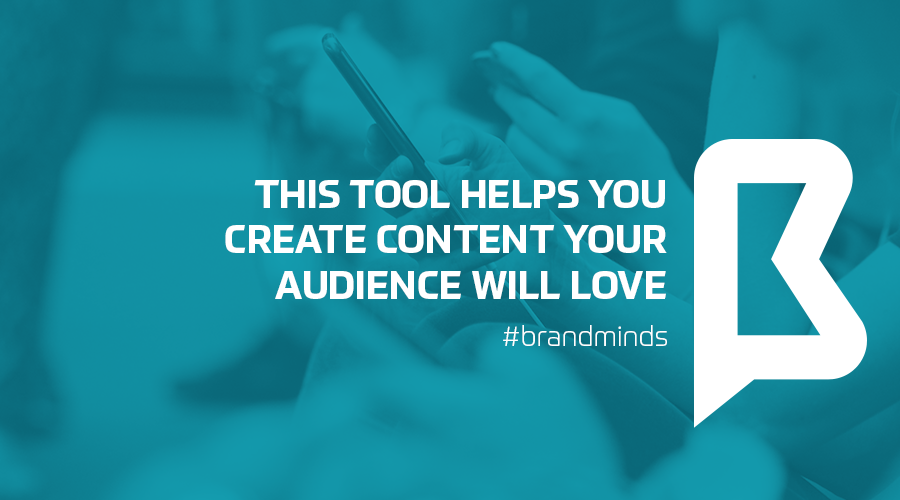
Are you a marketer or brand manager looking to update your audience profile?
Do you seek ways to increase engagement on your content?
This tool can help you.
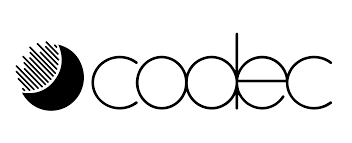
We started Codec to empower marketers and creatives with the empirical evidence they need to make better decisions and we are proud to have worked with some of the best in the business since founding Codec in early 2015.
Codec team
Codec is a product developed by a team of marketers, technologists and data scientists whose purpose is “helping creatives and brands make great content with confidence”.
What is Codec?
Codec is an AI powered cultural segmentation platform and consumer insight tool that allows brands to discover, interrogate and activate new audiences.
Here is how marketers can benefit from using Codec:
- Identify and understand existing target audiences and personas;
- Derisk creative and strategic decisions;
- Increase content performance.
How does CODEC work?
CODEC works as a process, by going through three stages:
1. Select your audience – you can choose from your existing personas/communities, your existing social handles or you can choose from over 1500 Codec pre-built audiences;
2. The platform proceeds with gathering the data and extracting the insights using sophisticated AI and machine learning, from natural language processing to neural nets;
3. Use the insights to inform creative decisions in any stage of the content creation process, be it research, strategy, creative, or distribution.
What kind of insights does Codec provide marketers with?
Psychographics are stronger than demographics
Demographics are no longer enough to get a complete profile of your target audience. Your audience is defined beyond standard criteria such as age, location, sex etc.; behaviours are shaped and triggered by how strongly your audience feels and resonates with a certain subject or interest.
Codec helps marketers discover these interests by providing them with psychographics so they can understand their audience in a deeper and more relevant way.
Here are 8 key insights and data that Codec provides:
1. Passion Point & Interest Analysis
This module analyses the level of engagement that the audience has with any particular interest. Codec tracks over 1,500 cultural interests across multiple European, South American, North American and Asian countries and territories to understand the interests that truly resonate with a target audience. The platform monitors in real time billions of content interactions from millions of users across social media, categorised into our 1500 interests. Marketers receive detailed analysis of their target audience’s passion points from their interactions with 3rd party content.
Benefit: Marketers are provided with actionable & shareable content strategy and enhanced content briefs.
2. Interests over time
As we grow older, our passions change: we lose interest in some of them and we discover other interests or beliefs that we feel strongly about.
Codec’s AI understands the 3rd party content that your audience interacts with and can track how the audience’s interests are changing over time.
Benefit: With the help of this tool, marketers can catch a rising trend or create evergreen content based on stable interests confirmed over time.
3. Personality analysis
Codec goes even further than identifying interests; it understands the core values and personality traits within a tribe or audience. It outlines core personality types by mapping their written text and content preferences.
Benefit: marketers can ensure the content includes the right tone, which dramatically increases shareability, affinity and purchase intent.
4. Optimal platform and format
There are so many formats you can deliver your content in: text, photographs, videos, infographics, epapers, podcasts etc. Which of these formats does your audience prefer and engage with? It can take a lot of time to pinpoint your audience’s preferred content format. Once you established the right format for your content, which platforms do you use to deliver it?
Codec provides marketers with knowledge of the formats and platforms that resonate with their audience so they don’t have to A/B test.
Benefit: This tool helps marketers make precise tactical content decisions to maximise the effectiveness of content through smart distribution.
5. Visual imagery analysis
A picture is worth a thousand words, but the right picture is worth an increase in brand awareness through engagement. Through deep learning and neural nets over millions of types of image, Codec sees the visual imagery and elements that most engage your target audience.
Benefit: Marketers can understand what genres of image content works best. Identify the framing, colour, tones and topics that are in-demand from their target audience.
6. Trending content
Delivering the content your audience is looking for at the moment they need it is a recipe for success. Google calls these moments micro-moments.
Codec identifies the recent, real-time content that is trending among your target audiences.
Benefit: Marketers can pinpoint the specific content that their target audience is spending time consuming.
7. Media planning reports
Nobody likes talking in an empty room and this tool helps you avoid it. Codec tracks exactly where your target audiences spend time online so you can target them effectively, increasing ROI.
Benefit: Marketers can customise entities they do or do not want to target against in order to protect their brand and increase effectiveness of targeting.
7. Influencers
Influencer marketing can drive engagement and increase brand awareness when done correctly. The success of an influencer marketing campaign lies mostly on choosing the right influencer.
Codec picks the most relevant and resonant influencers to use for creation and distribution.
Benefit: Marketers can identify the optimal influencers, YouTubers, bloggers, celebrities and brands that have an impact on their target audiences, and pinpoint what topics influencers would most effectively explore with their communities.
Eve, an UK on-demand mattress company doubled its sales using content developed with Codec insights:
Wrapping up
Here are the benefits of using Codec to help you create the right content for your audience:
- Better understanding of your audience by discovering the interests that truly resonate with it;
- Identifying topic pillars for the content you will create;
- Understanding the motivators for your target audience’s interests;
- Discovering evergreen content;
- No more A/B testing;
- Finding what content format and which platform to distribute it on for maximum impact with your audience;
- Which content your audience loves to engage with;
- Identifying the influencers that have the most resonance with your target audience;
- Making strategic decisions with confidence;
- Validating your choices and strategy plans.
How To Engage With Your YouTube Subscribers To The Full Potential
Over the years, YouTube has become the go-to place for content creators to showcase their amazing work to a massive audience. YouTube gets over 30 million visits a day, according to blog.elink.io. And in a period of time when Facebook is pushing a lot on video content, YouTube decided it’s high time it got back on its target radar as the number one video platform out there. Therefore, one of its moves was creating YouTube Community, a place for YouTubers to interact with their fans and followers in a very friendly environment. The YouTube Community gives creators a space to post various types of status updates – polls, pictures, text, GIFs, links and more. Subscribers and other visitors can then like or comment on these posts.
At launch, YouTube had extended the feature to just a few creators, and, according to engadget.com, the rollout has been slow ever since. But the response has been pretty positive and YouTube said it planned to add more channels following the launch. And, in fact, at the end of November last year, YouTube today announced that its Community feature is available to anyone who has a channel with more than 10,000 subscribers. The YouTube Community tab replaces the Discussion tab, the place where creators and viewers used to have general conversations. The main difference between the Community tab and the Discussion tab is that the Discussion tab was purely text-based, whereas the Community tab allows a variety of posting and discussion capabilities.
To get inspiration for your own community posts, follow the community posts of channels you subscribe to by visiting their Community tab or by viewing the Subscriptions tab of the YouTube app.
“It’s extremely important to engage with your users in the comments section. Try to respond to every comment you get; not only will this help your video engagement, it’ll help you mold your community as you see fit. Also, the more engaged a specific user is with your channel, the higher the likelihood that your videos will make it into their emails and notifications,” wrote Jayson DeMers for Forbes.
How to use the community tab feature to its best capacities? Here are some steps that will help you along the way:
- Tell your followers about the new feature and how you intend to use it, for them. To add a link to your Community tab in the video description, open the tab and copy the URL from your browser’s address bar. Share the video on your Community tab to make sure first-time visitors to this tab know what they can do to engage with your channel.
- Reach more. Try cross promoting other channels and creators, or promote your own second channel through the Community tab. This is a handy way of increasing your reach and letting people know about the other content that you care about.
- Make sure your subscribers enable the notifications. You may use a video or a community post (or both) to let subscribers know how to get notified about your latest channel activity. Tell them that they need to click the bell icon to the right of the button they use to subscribe.
- Use polls to get to know more about your target. Polls are a great way in which you can easily find out if they liked your video or not or what they want to see next. You can then refine your content based on their suggestions and provide more quality content to your audience.
- Promote your products. “Post a status update to the tab with an image of your product and a link to the product’s sales page. Consider creating a special landing page on your website for your channel subscribers and offer an exclusive discount just for YouTube visitors to measure the results,” said socialmediaexaminer.com.
- Create teasers with the following content of your videos or/and of important launches and events you have for your brand. Offering this exclusive new content will spark their interest and get them on your channel when you launch the new finished product or service. At the same time,you can also promote successful past videos for the people that haven’t seen them yet.
- Share exclusive GIFs and memes. Don’t forget we all want to have fun and enjoy our lives and we were drown to the social media platforms because they offered just that. A brand that can show emotion and humor is a brand that will always win people’s hearts and one that they can relate to.
How to create an online storytelling campaign for an NGO
“Storytelling is how humans communicate with each other, the way that we make sense of complex information, and how we relay our experiences to others. Nonprofit storytelling can motivate people to pay attention and take action. Emotional, appealing stories can build an online audience for your nonprofit,” wrote TheBalance.

Videos allow you to combine your dynamic story with emotion to create a connection with your audience that words and photos cannot build. Emotion is your main asset to use. Moreover, organizations can convey impact in a way that engages and inspires donors by persistently telling stories.Through storytelling, nonprofit organizations can harness the power of emotion to make a connection with donors that inspires action.
According to thebalance.com, a storytelling campaign has three phases: planning, implementation, and evaluation. In the planning stage, you need to articulate the goal of the storytelling campaign clearly. “Design each campaign for a defined purpose and to accomplish a specific goal. You may need to carry out multiple storytelling campaigns per month to achieve your goal, or perhaps just one per quarter, depending on your resources. Once you define the action that you want people to take, you can determine who is most likely to take that action, and the emotional storytelling hooks to get them to do so.”
The next steps are selecting your audience and making sure that the story is true and it fits the audience’s expectations and realities. There are five main types of stories that nonprofits can collect and develop — value stories, social proof stories, founder stories, resilience/continuous improvement stories, and impact stories. After deciding that you must collect the necessary pieces of information to create the right campaign, choose the right channels to whom to send it and promote it,create it, share it and evaluate it. More details you can find here.
“Because e-mail is a great way to engage supporters who might not regularly visit your website, you can use it to hook supporters into your story and prompt further action, without it feeling like you’re asking for donations at every point of communication. Use e-mail as an opportunity to invite readers to be the hero of your organization’s mission. Layer in visuals: With the average person’s attention span maxing out at 8 seconds, you can’t afford to deliver a novel to people’s inboxes. Instead, think of your story as a short picture book. This email is such a great example because it injects an image after every couple sentences. Break up blocks of text with visuals to keep readers engaged and keep your copy clear, simple and concise,” wrote classy.org.
More ideas and pieces of advice you can find also here.
How can behaviors be changed?
Marketers’ goal is to convince the consumer to choice his product or brand, to like it and become a fan of it, a loved brand. What can a marketer do when he needs to convince the consumer to change his behavior and change his favorite brand or change his daily routines? How can he reach his goal?
For once you can try doing it online. While all of us spend a great deal of time online, the digital world has become a convenient gateway to the audience a marketer needs to reach. And because behavior change happens over a period of time, digital is an affordable way to stay in front of your targeted audience. “Behavior change marketing, also known as social marketing, involves adapting the principles of traditional marketing in order to effect a positive behavior change. It involves a deep understanding of an identified target audience in order to better understand the barriers that exist and what might be helpful in motivating them to change,” wrote Vont Performance Digital Marketing.
Moreover, according to the website, the message needs to be fun, easy and popular. Targeting is key and enables you to more closely reach your specific audience. Social media platforms offer you good targeting capabilities, ads are not targeted based on a keyword being searched, but rather on rich demographic and psychographic data known about social media users. Ads can promote content designed to inform and engage the target audience and, therefore, “capture” the wanted audience.
You can also do programmatic digital advertising and use Landing Page/Conversion Rate Optimization (CRO).”Targeted ads with calls-to-action that lead to specific landing pages work in tandem to lead your audience to you – and to the specific action you wish them to take. Optimizing the landing page (CRO) further increases the likelihood that the action will be taken,” added Vont.
“Your target audience is (usually) not you. You may think you know them – but do you really? One of the most important pieces of Behavior Change Marketing is having a deep understanding of your target audience. How they think, feel, act…where they hang out, how they talk, who they trust, etc. Don’t assume – do your research. In-depth quantitative and qualitative research is critical in developing an effective behavior change campaign,” explained Ethos Marketing on its blog.
Moreover, the blog shows that when it comes right down to it, Behavior Change Marketing isn’t entirely different from traditional marketing, in which we attempt to convince people to buy a product or service. Behavior Change Marketing is also transactional, but instead of goods we barter with behaviors. “Before you can make someone change their behavior, you need to uncover what’s in it for them. What matters to them enough to change the way they act? Research tells us that this is different for different audiences. In order to affect behavior change you need to alter the perception of the desired action (or inaction). If the goal is to recruit those teenagers back over to Facebook (or away from social media in general), we need to convince them there is a fun, easy, and wicked cool reason to do so.”
Start step by step and keep it up. Be in continuous connection with your target, follow it, research it, interact with it, use an integrated communication to make sure the consumer feels you are with him all the way. Don’t just use digital and PR, digital, use traditional and interactive tools as well. Social media, video, direct mail, and experiential marketing all play a part in giving the target audience the knowledge, will and skill to change.
Moreover, make sure you are measuring all the time, in all the campaign’s stages. It’s the only way you can actually see if your process has results or not.
How live blogging at events can help your brand
Live blogging is a great guerrilla marketing tactic that can help you grow your following and voice in the media, taking advantage of the event’s audience and speakers. When you live-blog, you can get attention in the moment from people attending the live event and even a bigger audience,adding the people that couldn’t attend the event,but were interested in the subject.
According to socialmediaexaminer.com, live blogging can focus on: an entire event, several connected sessions or presentations, a single presentation, a behind-the-scenes look into the event.
Lisa Barone, vp of strategy at Overit, explained for Ad Week how a person can make the most of live-blogging as part of a strategy to develop brand influence.
- Do your homework. Before you start signing up for events, Barone said it’s important to understand your audience, the people important to your brand and find the events those people are attending.
- Have a plan. Barone said it’s easy to send someone to a conference and tell them to cover what happens. You’ll get better, more targeted content if you create a plan. What sessions should they attend? What topics do you want to focus on? Are they live-blogging every session they attend or write one recap post?
- Make the right connections. Don’t wait until you arrive at the event to start connecting with people. If part of your plan is to interview speakers, make that connection ahead of time and schedule time before they speak.
- Promote your attendance. If people don’t know you’re at an event, they won’t look for coverage from you. Barone said, “don’t wait until the event to let people know what you’re doing.”

Moreover, other facts that we consider need to be taken in account are:
Engaging with the audience as often and early as possible
“Getting your audience involved not only elevates their voice, but also empowers your messaging. You can also start creating various touch points with your audience by creating brand awareness videos and social-media sharing contests that encourage people to talk about your event. You can even use a little incentive like a give-away or advance content from speakers. Once you have an idea of the type of content you want to create, it’s best to lay it all out. Content calendars can help program content from your event throughout the year so you know how each piece fits together,” explains Nate Bird for visual.ly.
Teasing your session. If you are speaking at the event, you may want to write about your session also before it occurs. Not only is this is a great way to repurpose content that you have spent a lot of time creating, but it also builds anticipation for your session.
Encouraging the audience to share on their social channels using the dedicated hashtag.
More ideas one can find here.
Ideas for Strategic Thinking in Marketing
Strategic Analysis
It’s the process of developing strategy for a business by researching the business and the environment in which it operates. A strategic analysis will be referred to as a SWOT analysis: Strengths, Weaknesses, Opportunities, and Threats. Within these four areas, you will define your organization’s position relative to the competition and operational environments. While many believe it is best used at the organizational level, when properly implemented, a SWOT analysis will often return targeted, productive results at division or departmental levels of business. More about this step you can read here.
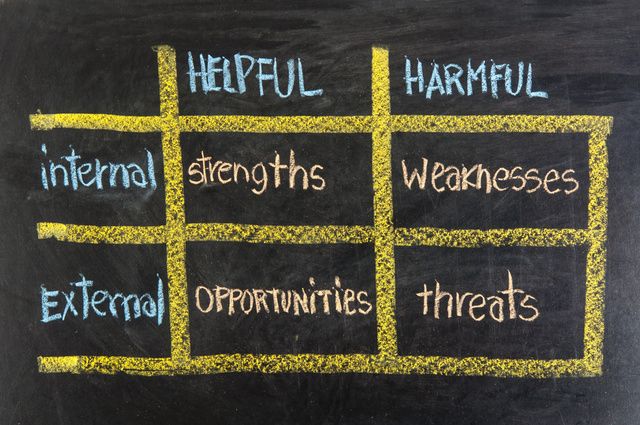
Scenario planning
The scenario planning technique constitutes a useful and practical way to think about the enterprise as a whole and its interaction with the environment. It refers to the formulation of alternative possible futures for the firm and its environment as a means of exploring the utility of different strategies. The scenario represented a landmark shift in management perspective, from a deterministic view (‘‘we can control our destiny’’) to the view that the future is intrinsically unpredictable (‘‘we need to envision a range of different
possible futures and prepare for them’’). Its pioneering implementation is usually attributed to Herman Kahn’s cold war studies at the RAND Corporation and the Hudson Institute and to Pierre Wack, who was head planner of the Royal Dutch Shell business environment division in the early 1970s.
other variables that reflect the overall progress of the firm towards its long-term objectives.
What’s most important is achieving high performance while balancing the needs of all the stakeholders.
Facebook Groups for brands and how they work
A ccording to Facebook more than 100 million people are members of what they call “very meaningful” groups.
“These are groups that upon joining, quickly become the most important part of our social network experience and an important part of our physical support structure. For example, many new parents tell us that joining a parenting group after having a child fits this purpose.”
As such, “Facebook sees groups as an opportunity for the platform to boost engagement and interaction, making The Social Network an even more important part of our interactive process. And there’s a growing range of opportunities for brands in this evolution. You need to tread carefully – you can’t just rush in spamming everyone and everything, everywhere you can, hoping for a good result – but there are ways to utilize Facebook’s renewed Groups focus to further your reach and resonance on the world’s biggest social network,” says Andrew Hutchinson for Social Media Today.
Before the social network boom, online communities and forums were THE spaces that allowed people to interact, collaborate, share content, and learn from each other. “Now maybe Facebook, Twitter, Google+, and dozens of other social networks have stolen a big part of the spotlight, but lately, groups, forums, and online communities are once again regaining their power, and with great force. Why? Because brands are finding it harder and harder to gain exposure and reach their fans and followers on platforms like Facebook. Also, because companies are finally realizing that people today more than ever, seek to satisfy the need for a “sense of belonging,” to express, to learn, and to share,” writes Josefina Casas for Postcron.com.
What offer the groups even more after the recent updates?
The possibility for pages to post into groups
In the past, only individual members were able to post in Groups, but now, you can be logged on as a Page and can comment and interact within a group setting as a direct representative of your business. One of the biggest pluses and benefits is that you can now offer advice, assistance and technical support from your official brand account, which lends more weight to your advice, while also serving as a brand building process in itself.
Still, it’s important to know not to tackle it in the wrong way by becoming to insistent or aggressive. Your audience needs to see you as a consultant and advice bringer, not a psychopath. Offering assistance where possible can be a great way to boost your business.
Having analytics on your side
The recently launched Group Analytics feature, provides a range of key data points to help group admins get a better understanding of their audience, and how to maximize response. Research are data are proving to be as important as ever nowadays, helping the brands remain relevant and offering their target what they need and want. The pieces of relevant information received on members and engagement, and also on the days and times when people are most active within your group, are enabling you to better plan and schedule your content to maximize response. There’s also demographic breakdowns, which can not only help you get a better understanding of your core, engaged target audience within your group, but can also improve your wider market research efforts.
More you can also read here.
Best Marketing Ideas in 2017
Finding inspiration is something a marketer and creator should always be interested in. We have some ideas that might give you a push to try something new and help your brand even more.
Paid marketing on untapped channels
Differentiation is key and clients need to understand that using only Facebook and Google for promoting themselves, even they bring huge volumes, is not enough anymore for achieving success. In an ever changing market, being among the first to tap into less used platforms and discover the ones that have the biggest change to rise (Snapchat, Instagram) is what brands’ representatives should do.
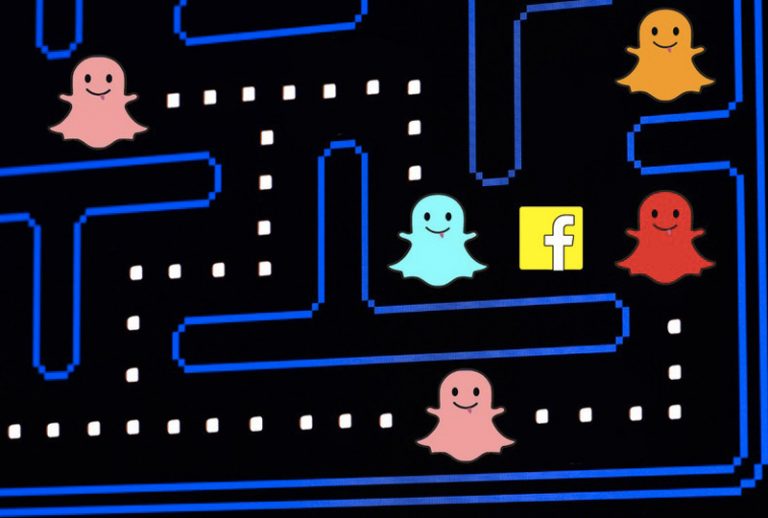
photo: wearevillage.com
Advertising is most successful when there is market inefficiency.
Choosing to communicate smartly on a channel that isn’t very used or not put to its true value, may be the key to success. Moreover, the advantages occur on channels where there’s a lot of volume, but less competition or no competition.
Content Multiplier Marketing and cross promotion
It’s the time of the multi-channel communication, instead of using just one or two channels. Finding the perfect mix for the brand is a very important step to take. The content is one of the most important aspects these days and can take the brand in the direction you want it to. At the same time, the content can be produced in several ways of expression (articles, videos, audio recordings, a blog post) and by using different shapes and channels it will help the brand increase its awareness.
Moreover, it’s really important for the brand’s target to be able to find the content on several mediums and see its versatility. Also, it’s another manner of gaining new fans that love different types of content.
Create content that’s easy to replicate.
Making a smart and easy content can also help the fans create their own twist on it, share it and show their personality along. Who doesn’t want a target involved in the brand’s growth?
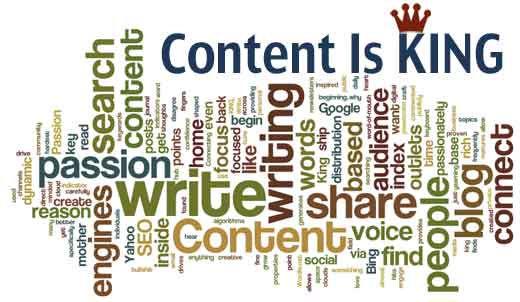
Go mobile
More than ever it’s the mobile phones’ time. Most of the people are using Facebook on the mobile phone instead of the desktop or the tablet, as well as checking and answering their emails and other important conversations and messages. Therefore, the brands’ messages must the adapted to the medium, in order to create the best user experience possible.
Appeal to visual strategies
People understand better the messages and feel more connected to the visual side of the stories. By using video recordings and live-streaming, the brands are growing faster than ever. Recently live-streaming has taken the social media world by storm, Facebook reporting last year that 100 million hours per day of video are watched on their site. Therefore, the marketers should engage their audience with live-streaming at events or conferences that highlight them and their product. It’s a quick and effective way to connect with customers and build the brand.
Visual marketing effectiveness will also rely on engaging graphics. While graphic design has always been important, it will need more attention this year. Viewer engagement durations are shorter and social feeds are getting more crowded. Stand out with powerful graphic content.
Create an expertize blog
Making sure to optimize the brand’s website for search engines and mobile, with quality blog posts, we’ll have as a result the business’ appearance at the top of search results for topics related to your service offering. The result will be definitely a larger number of visitors accessing the website, an increase in leads, etc. The effectiveness of the blogging will be based on exciting and informative content, therefore hiring an expert in your industry or scheduling your own time to draft a quality post each month might be exactly what the doctor ordered.
Best packaging ideas for 2017

In the very competitive and full of inspiration and imagination year such as 2017, a good product is not enough for it to become a brand and capture the consumer’s attention. Let alone make him/ her choose it from the numerous similar products on the shelf and lead to a future buy. Therefore, a great packaging design, in sink with the product’s qualities, characteristics and what it stands for, will mark the path to a successful rise and growth of a brand.
Here are some of this year’s main packaging design trends and ideas:
1. Back to basics. Simple, bold and clear
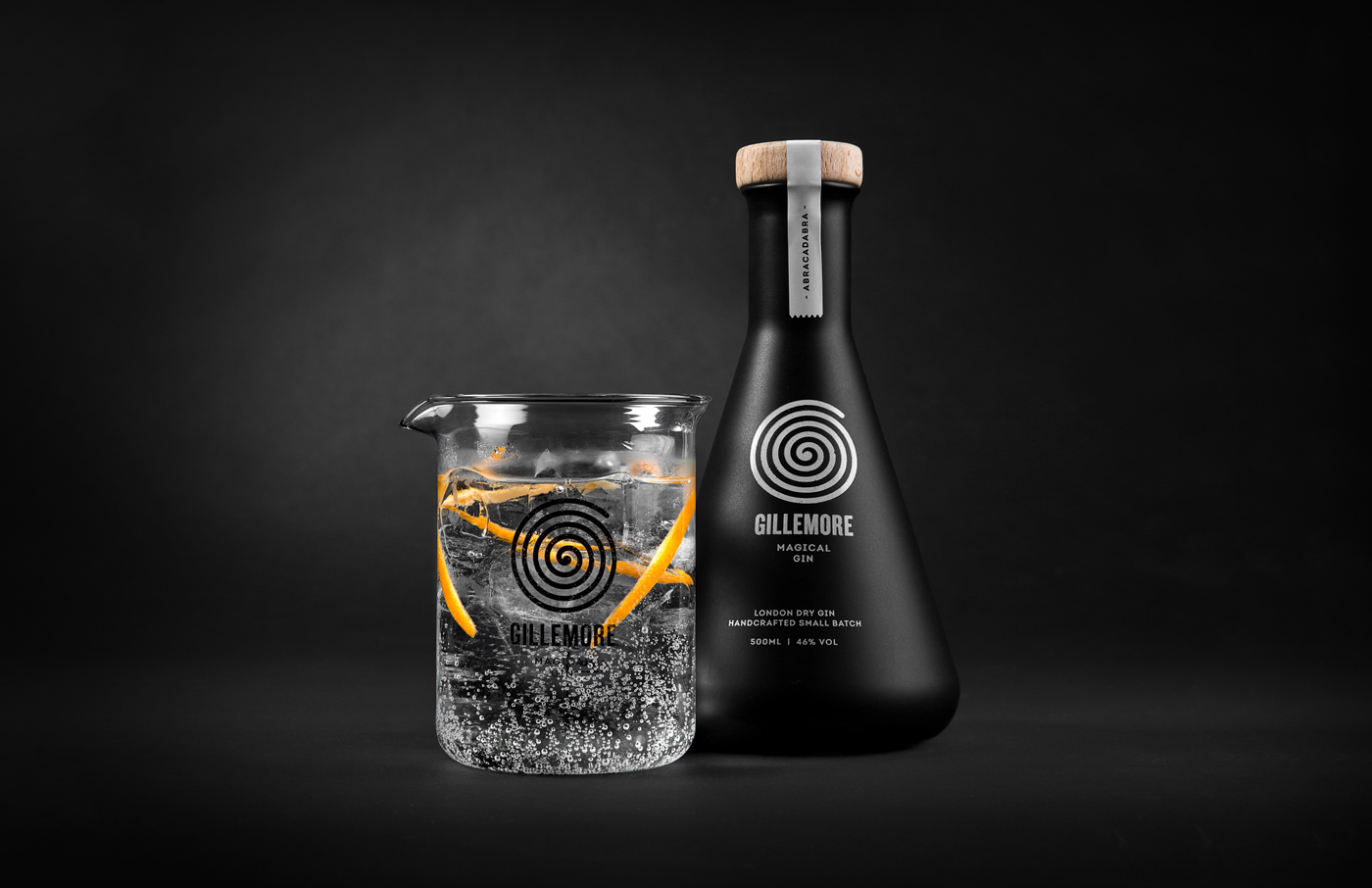 source: skinn.be
source: skinn.be
This year, the trend is better articulated and more compelling to the customer. Minimizing the elements used in a package design can elevate a product… as long as it gets the point across. In our fast-paced world, shoppers don’t always have the time to study each and every product detail. Sticking to the essentials and making sure the buyer will make a more informed decision, a clean-cut design can convey information and make a product shine using simplicity.
According to thedieline.com, the designers understood the purpose of the object and the thought process of their audience. In service of this, they simplified the message and stated it clearly and boldly across the face of the packaging. These designs are text-based and say what they are in no uncertain terms. They realize the value of a simple message in today’s crowded world. The simplicity does not come off as lazy or incomplete but refreshing and honest. This is the manifestation of the idea: clarify not simplify. These designs identified exactly what the customer was searching for and expressed it simply. It comes off as powerful and trustworthy.
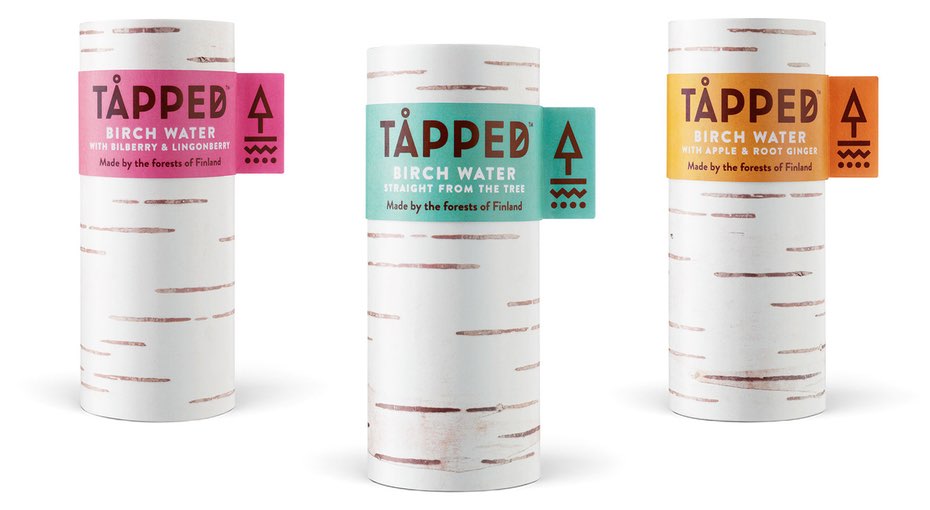
source: tapped
2. Putting focus on the custom lettering
Almost every designer loves to get crafty and create some of their artwork by hand. According to Martin Lupus of 99designs.com this thing happens in order to get the organic effect: fluid imperfections—like irregular lines or natural texture fills— that can make a product stand out through warmth and set it apart from digital designs. “This warmth can create an emotional tie to the product, making it feel handmade and wholesome, or communicating a feeling of nostalgia. Either way, for 2017, we are seeing a massive comeback of hand-lettering,” added Lupus.
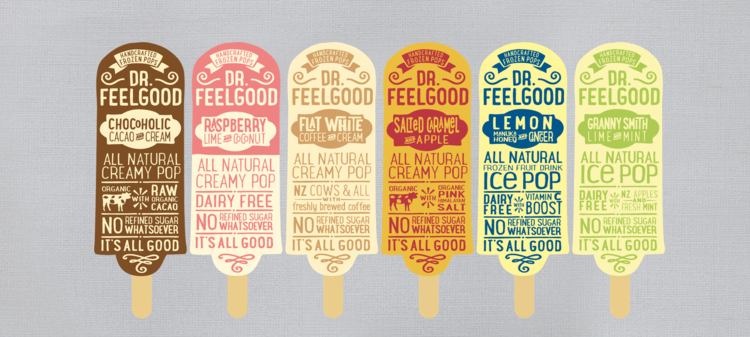
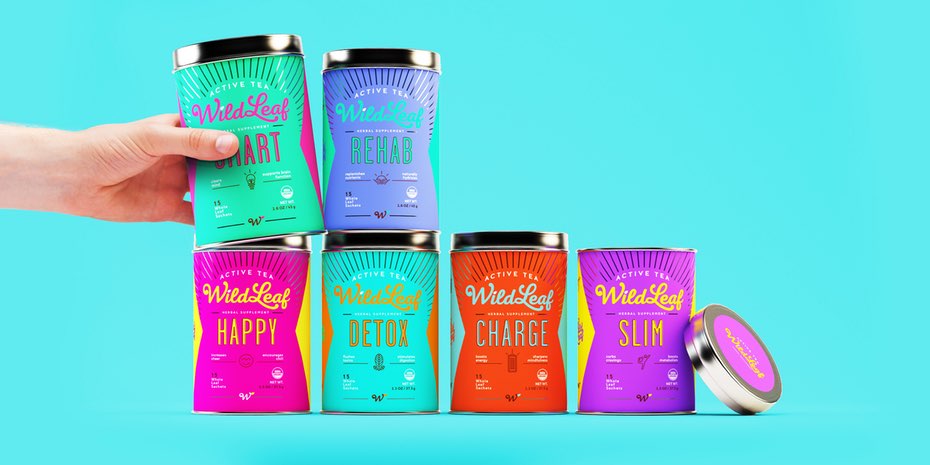
source: sweetyland
3. Letting geometry rule!
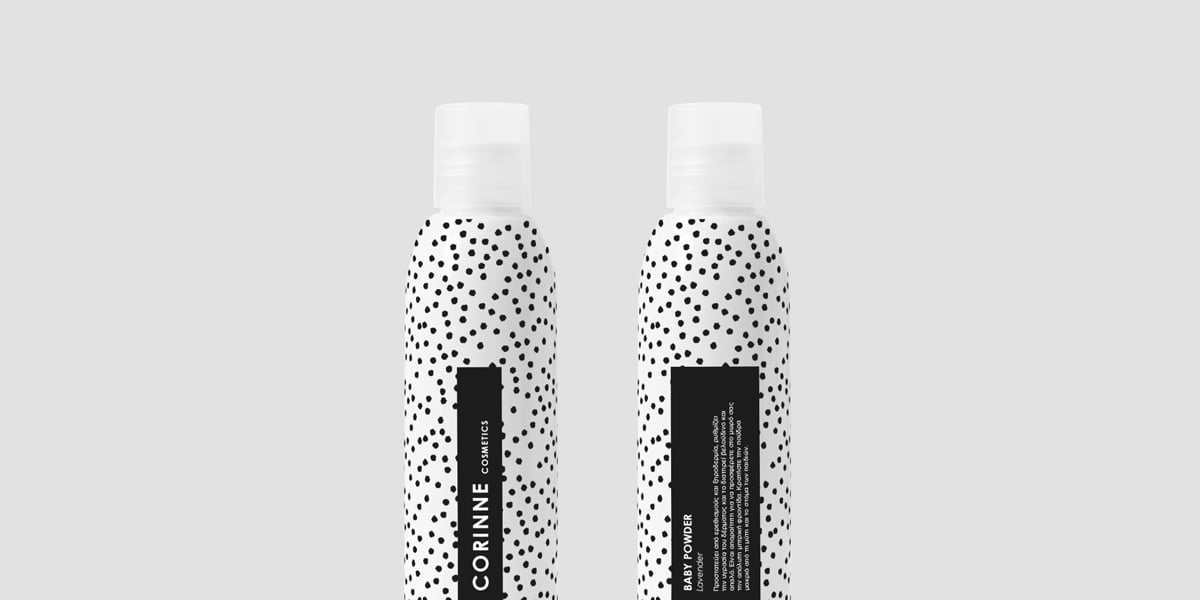
 source: thedieline
source: thedieline
Hand in hand with the previous trend, this theme is centered around expressing simplicity, approachability, and honesty through patterns and shapes. Circles, triangles, and squares are, as the specialists consider, an attempt to treat the mindset of a weary, overwhelmed consumer. Particularly in industries with over-the-top design, these reduced approaches standout. Familiar shapes, colors, and patterns communicate an awareness of the world and a sensitivity to the consumer.
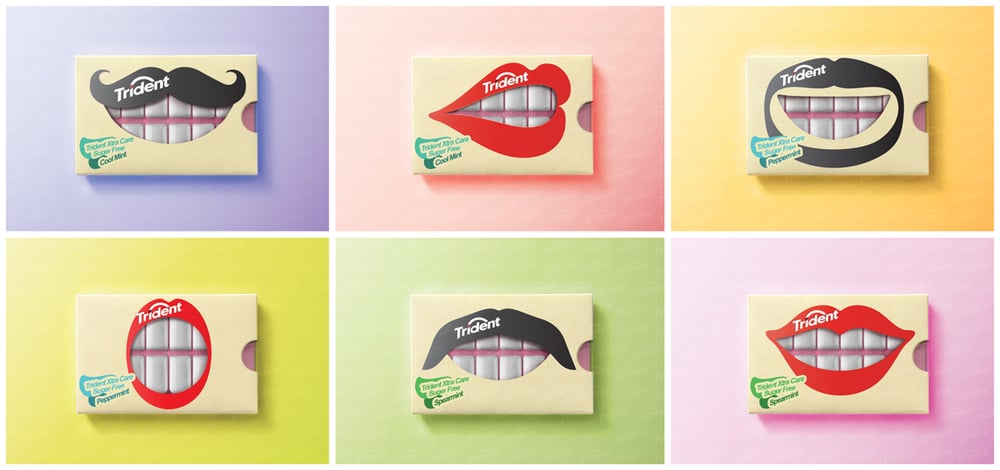
- Old school with a twist
The past is haunting us, but in a good way, through a “idealization of the past—a longing for simpler times when things were cared for, made by hand, and detail-oriented”, as Grant Wenzlau from dieline.com would say. But these designs are not simply regurgitating old forms and techniques, they are modernizing them and combining them in new ways. “This new take on what is old is refreshing because it selects the best parts of different periods of our history and juxtaposes them. These designers realize the increasing rareness of endangered techniques like calligraphy, letterpress, and foiling. These artisanal practices grow more and more desired each year. In the mind of the consumer, they are increasingly novel and related to greater value. But far from merely being historical, these techniques are being re-imagined in the context of mid-century layouts and applied to a 21st Century, cutting-edge materials”.
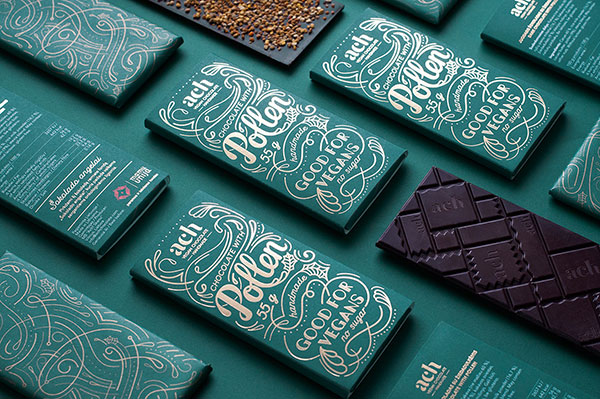
source: ACH Vegan Chocolate

source: cocktail kit
Moreover, vintage package design brings back memories for people who lived through the original era and satisfies the curiosity of younger generations eager to explore the past. The key to going vintage is to find a balance.
5. Making the color a focus and priority
Colors evoke emotions and affect purchasing decisions. Because of this, color has always been one of the most important choices in packaging design, presenting in new, exciting ways. Bright colors and vibrant associations are beginning to make a scene on store shelves. More than that the colors and their special use are able to differentiate the packaging and the product at the shelf, making it to stand out and attract the consumer that will always choose exciting over common and boring. Also, it is proven that the consumer will always remember a product that is interesting and has the wow visual factor.
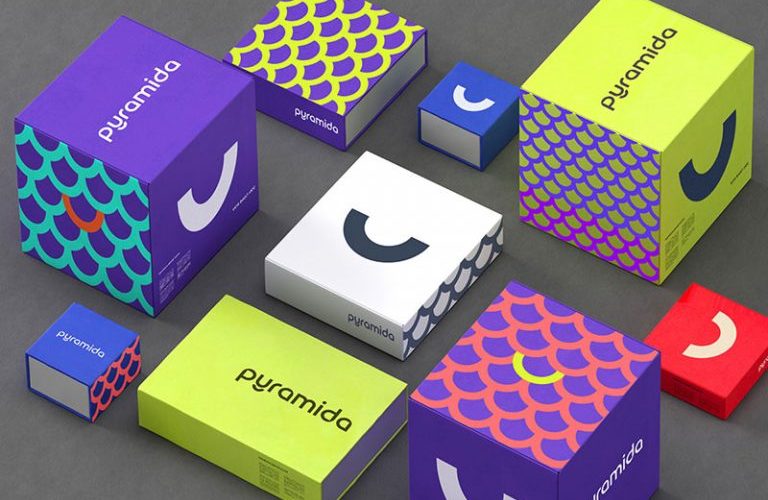
source: Pyramida
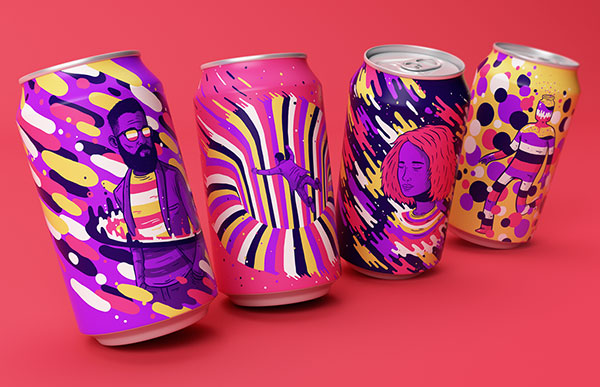
source: Resonance
6. Be playful and multi-functional!
In each of us lays a child and we love to be given the opportunity to loose ourselves from time to time. So does the consumer. He appreciates a good, interesting packaging that can be joyful, playful and multi-functional.
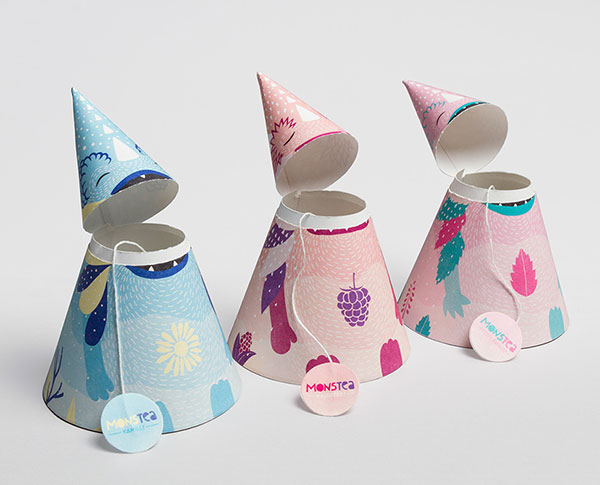
source: Monstea
7. Repeating a pattern
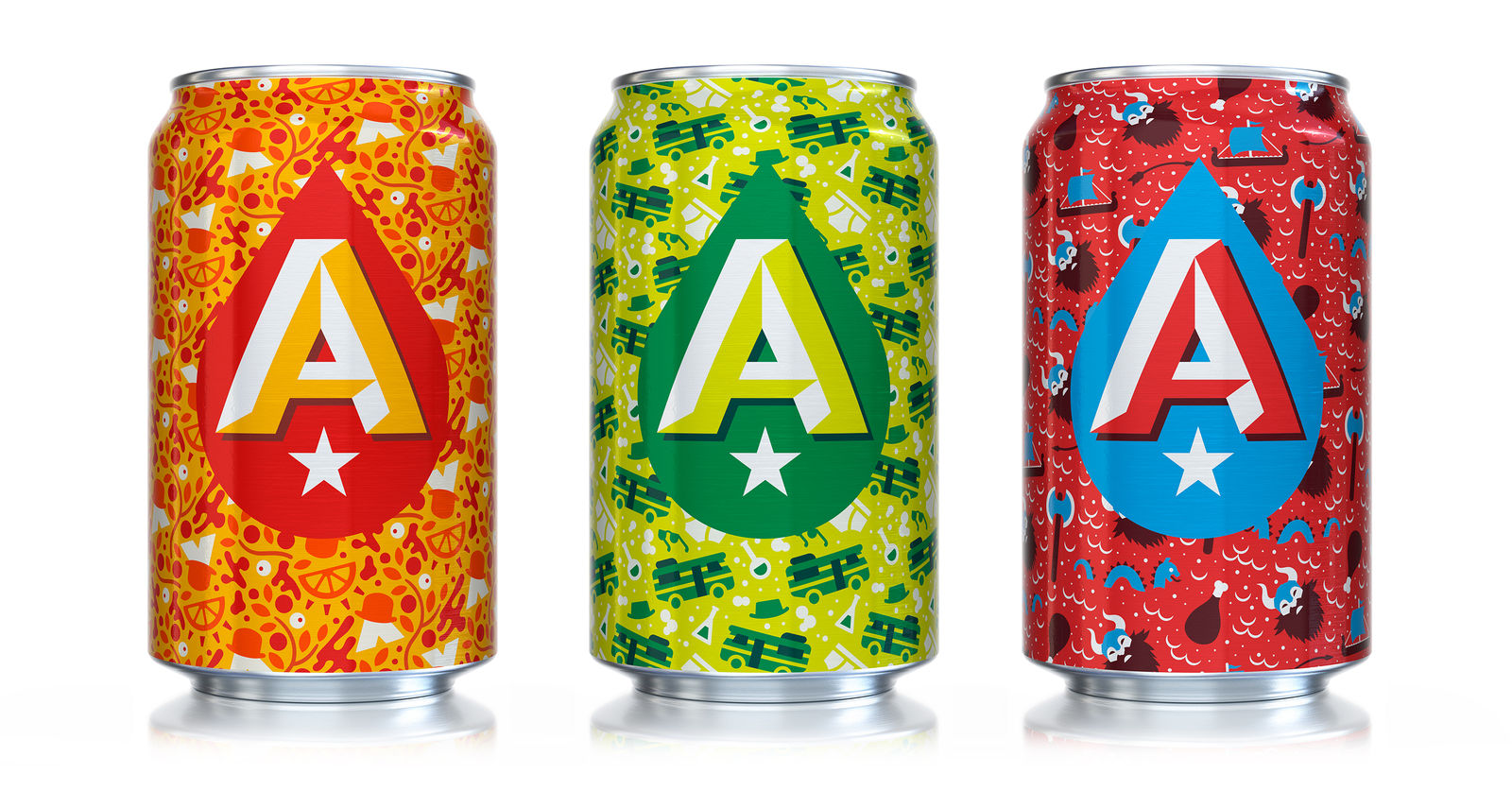 source: Helmes Workshop
source: Helmes Workshop
We learn and remember through patterns, as our brain is built that way. Using well-chosen and beautiful patterns can also elevate a package design from ordinary to ethereal. Although the idea of repetitive shapes might seem simple, the technique can be dynamic and compelling when used correctly. Moreover, as it happens in writing a book or a play or a song, repeating a visual motif that captures the essence of the brand sends a strong message. Whether the pattern is bold or playful, patterning the package can create a strong identity that customers will always remember.
8. Storytelling & narrative
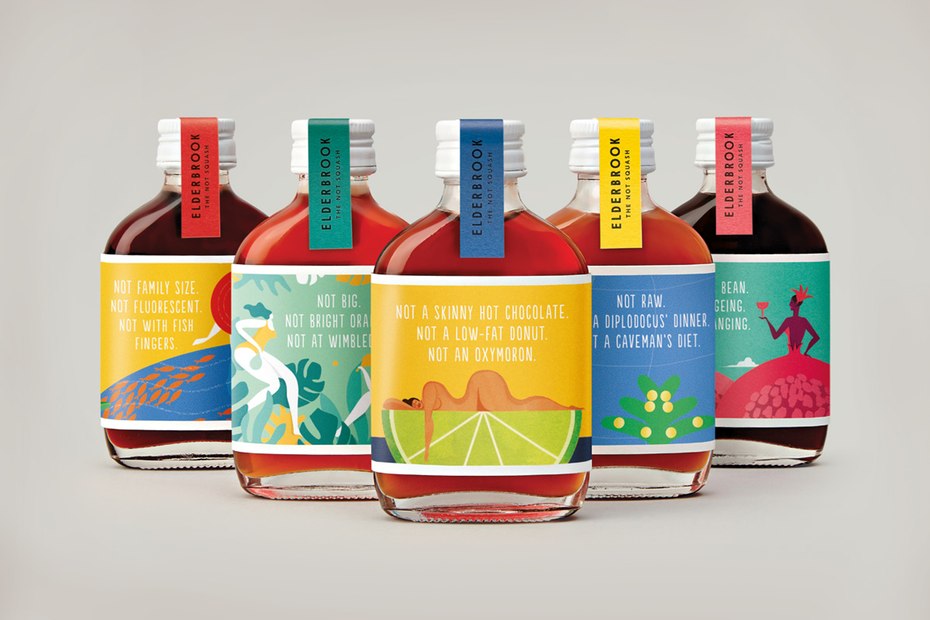
source: Smith & We All Need Works
People love stories and, as previously said, having a story behind everything one does it’s always a plus, giving it authenticity and creativity, at the same time. We seek out and cherish the stories that feel closest to our hearts, therefore the packaging design are starting also to incorporate narrative illustrations, trying to get closer to the consumer’s empathies and emotions. The place where the real sale and conviction start.
9. Putting it in the mail

source: Luxembourg
Internationally, there’s a strong comeback for the print and its values, for going to back to the roots, the life before the online. Coffee shops that are inviting their costumers to stop using the wifi and talk to each other, online magazines that are starting to get their first printed versions, people choosing books over kindles, etc. With faster, more efficient ways to communicate, the joy of receiving a letter via the post, in the real mail, not online, has started to disappear over the years. But there is a new trend that will take people back to that feeling. According to the specialists from 99designs.com, the packaging design is here to save the day with an emerging postal trend.

10. Going eco-friendly
The years to come will be more and more about sustainability. According to packaginginnovation.com, the new trends are about using green padding materials, with biodegradable bubble wrap and recycled paper being perfect eco-friendly alternatives. “One of the leaders in sustainable design, method sells bottles made with recycled ocean plastic. From using more renewable resources to keeping materials recyclable, more consumer brands are integrating eco-friendly design into their business. This is a trend that we hope to see grow with each year because it benefits everyone,” also added and concluded Martin Lupus.
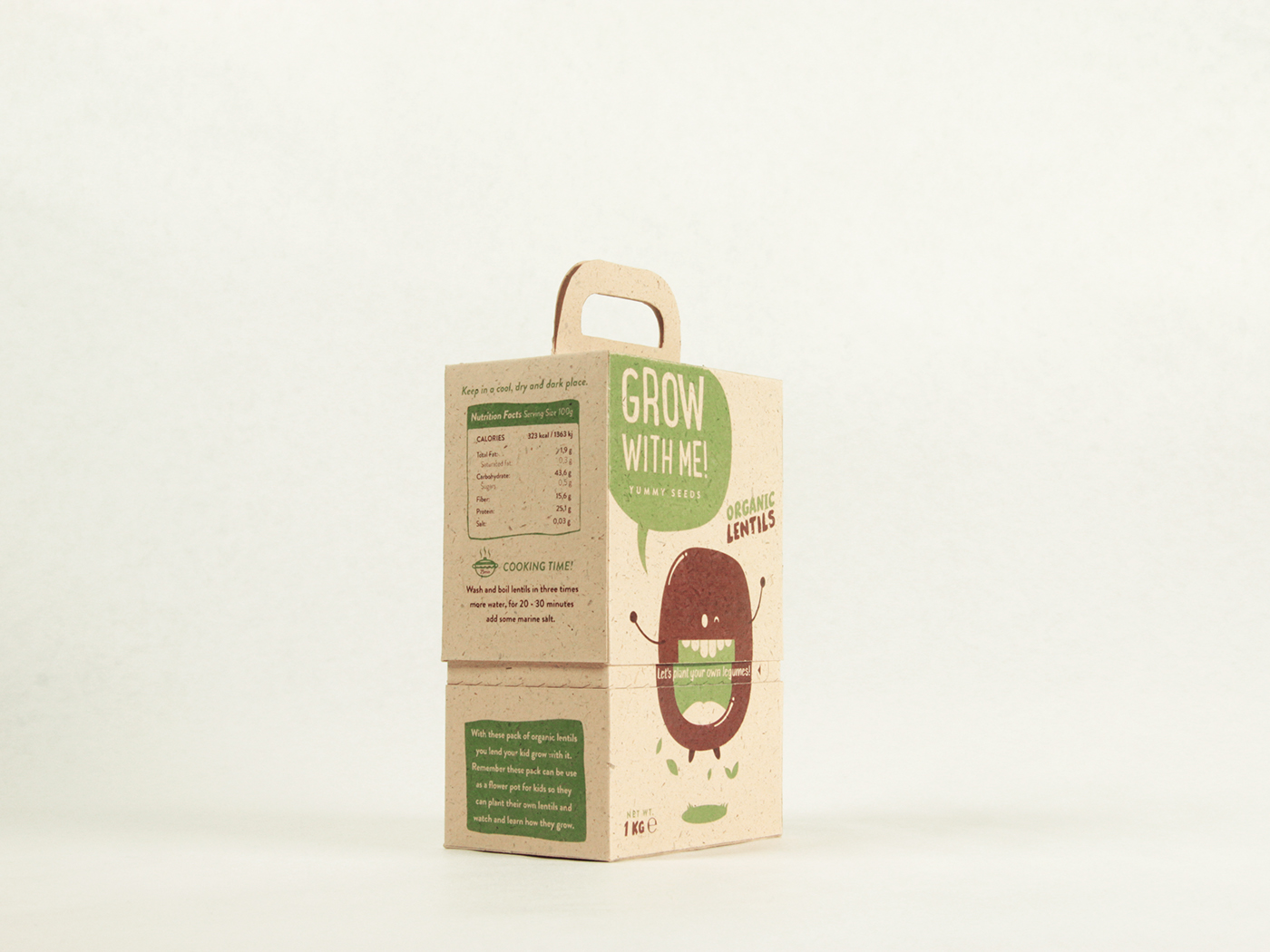
source: Grow With Me
Tips & tricks on how to create a successful video campaign on Facebook
Today is all about finding your vision and place on the market and targeting it the right way. Specific messages are created and translated in a specific way, for each media in part. What works for YouTube may very well not work on Facebook or cinema. Even if we talk about the same brand, campaign, positioning and target. So how does one create a powerful and successful video for Facebook, in order to really help the brand?
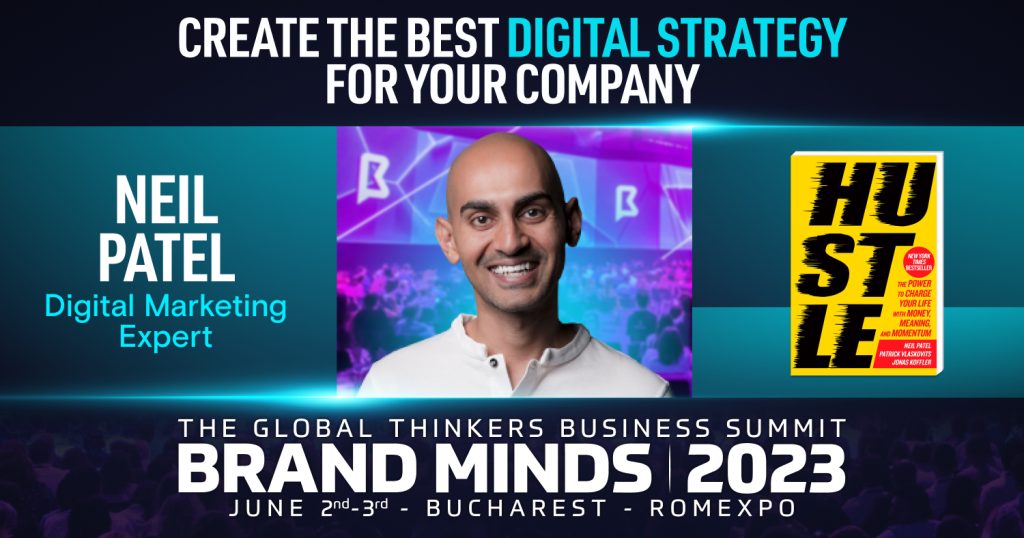
According to kissmetrics.com, over three billion videos are watched on Facebook daily. Video is eye-catching and engaging and, when used properly, is a great way to bring life to a product or brand. The website editors identified 4 main rules that you can find here. (credit photo: Shutterstock)
As Facebook says, while video continues to grow as a storytelling medium for people and brands, it has been working with hundreds of businesses on building and analyzing video ads to discover what makes great video creative. What they found was that, like advertising of all kinds, building effective video ad creative requires both art and science.
Some rules that would anyone help create a good Facebook video are:
- Tailor your story to your audience.
People are more likely to pay attention to content that’s relevant to their interests, which means you’ll likely get better results if you customize your ad’s message for the people who see it. Consider creating unique videos (or different versions of the same video) for different audience segments.
- Invest in production.
Whether you use a camera phone or a production team, secure the best available creative resources and set a realistic production schedule and budget. People are more likely to watch and remember videos that are well-crafted and designed to play on every device. Remember, cheap doesn’t sell anymore and doesn’t give the “authenticity” feel anymore. Treat the channel with the proper respect and attention and you will get the wanted results.
- Make sure people will relate to the story, by keeping it real and close to them. Use situations that feel close to people’s lives and habits.
- Use the first few seconds wisely.
Bring your story to life quickly, so as people scroll through News Feed looking for content, your video ad quickly piques people’s interest. Consider showing brand or product imagery in the first few seconds. Almost half of the value of a video ad is delivered in the first three seconds, according to research that Facebook commissioned from audience ratings and research company Nielsen. Seventy-four per cent of the value of a video ad is delivered to the audience in the first 10 seconds.
- Focus on storytelling.
Video length is less important than telling a cohesive and concise story. Your video ad shouldn’t be longer or shorter than it takes to tell your story well, so create a storytelling arc from the first frame to the last that keeps your audience interested along the way.
- Create empathy / entertain them / make them laugh or cry.
Everyone feels close to a good, real story that captivates them and brings their emotions to the table.
- Tell your story with and without sound.
Since videos on Facebook autoplay with sound off, it’s important to make sure your video ads entice viewers even when muted. When sound is off, beautiful imagery and on-screen text can help tell your story. When enabled, your video’s sound should offer additional value to viewers and further bring your story to life.
- Use the Groups section
Meeting friends, and sharing your life with those friends, is the business of Facebook. The platform’s ‘Groups’ video perfectly portrays how it helps people connect with others who share similar interests. It creatively identifies how users can benefit from using Facebook by providing a clearly defined problem and a beginning, middle, and end.











